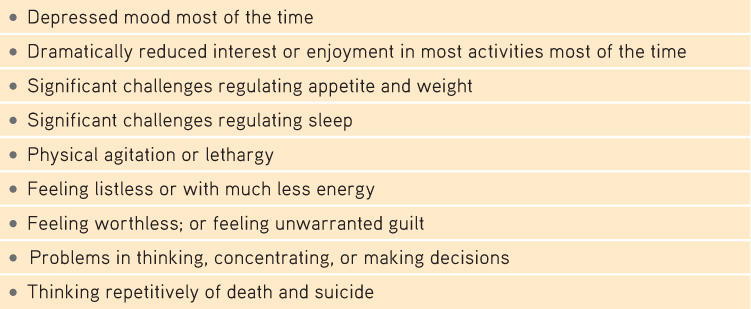51.1 Major Depressive Disorder
Major depressive disorder occurs when at least five signs of depression last two or more weeks (TABLE 51.1). The symptoms must cause near-
 Table 51.1
Table 51.1Diagnosing Major Depressive Disorder
The DSM-

To sense what major depression feels like, suggest some clinicians, imagine combining the anguish of grief with the sluggishness of bad jet lag. If stress-
Adults diagnosed with persistent depressive disorder (also called dysthymia) experience a mildly depressed mood more often than not for two years or more (American Psychiatric Association, 2013). They also display at least two of the following symptoms:
- Difficulty with decision-making and concentration
- Feeling hopeless
- Poor self-esteem
- Reduced energy levels
- Problems regulating sleep
- Problems regulating appetite